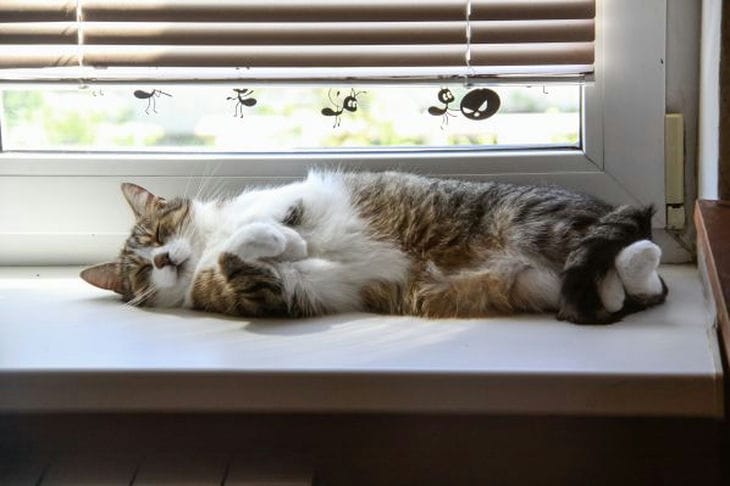Houseplant lovers often face an unexpected enemy in the form of a pet.
Cats, driven by natural curiosity and hunting instincts, often turn a flowering windowsill into a battlefield, leaving behind broken stems and scattered earth.
This situation can drive even the most patient gardener to despair.
However, there are effective methods that allow you to teach your furry hooligan to respect green spaces and maintain peace in the house.
Understanding Cat Behavior
Before you begin to wean your cat from unwanted behavior, it is important to understand the reasons for his interest in the windowsill and flowers.

Cats find this place attractive for several reasons: the ability to observe what is happening outside, comfortable temperatures, especially on sunny days, and, of course, the plants themselves, which can be perceived as toys or even prey.
Creation of alternative areas of interest
One of the key methods for distracting a cat from the windowsill is to create more attractive alternatives.
Installing a cat tree or shelf next to a window can give your pet a chance to watch the outdoors without disturbing the plants. Placing a cat bed in a sunny spot can also be a good alternative to a windowsill.
Physical barriers
If the cat is particularly persistent, physical barriers may need to be installed.
Special nets or screens fixed to the windowsill can effectively block access to plants.
It is important to choose safe materials that will not harm either the cat or the flowers.
Use of repellents
There are a number of products that cats find unpleasant to smell. Citrus peels, essential oils, or special sprays can discourage your pet from approaching plants.
However, it is important to remember that some aromatic substances can be harmful to the plants themselves, so they should be used with caution.
Positive reinforcement method
Instead of punishing unwanted behavior, it is more effective to use the method of positive reinforcement.
When the cat is away from the windowsill, you can reward it with treats or affection. Over time, the pet will begin to associate the "correct" behavior with pleasant sensations.
Enriching the cat's environment
Often cats climb onto the windowsill out of boredom. Enriching the pet's environment can significantly reduce its interest in forbidden areas. Interactive toys, scratching posts, mazes for food - all this will help to occupy the cat and distract its attention from plants.
Choosing Cat-Safe Plants
If you can’t completely wean your cat off of plants, you should consider replacing flowers that are toxic to animals with safe varieties.
There are many plants that are not only harmless to cats, but can also be beneficial for them, such as catnip or oats.
Regular play and attention
By devoting enough time to playing and interacting with the pet, the owner can significantly reduce its destructive behavior.
Active games will help the cat release energy and satisfy hunting instincts, which will reduce its interest in "hunting" for indoor plants.
Consistency and patience
The key to success in training your cat to stop unwanted behavior is consistency and patience.
It is important to remember that forming new habits takes time. Regular use of the chosen methods and the absence of "indulgences" will help to achieve the desired result faster.








